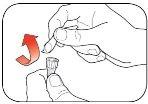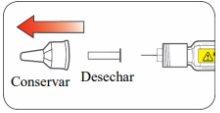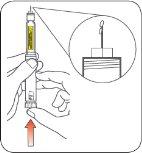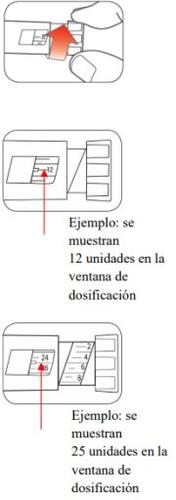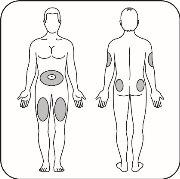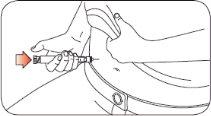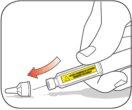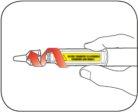
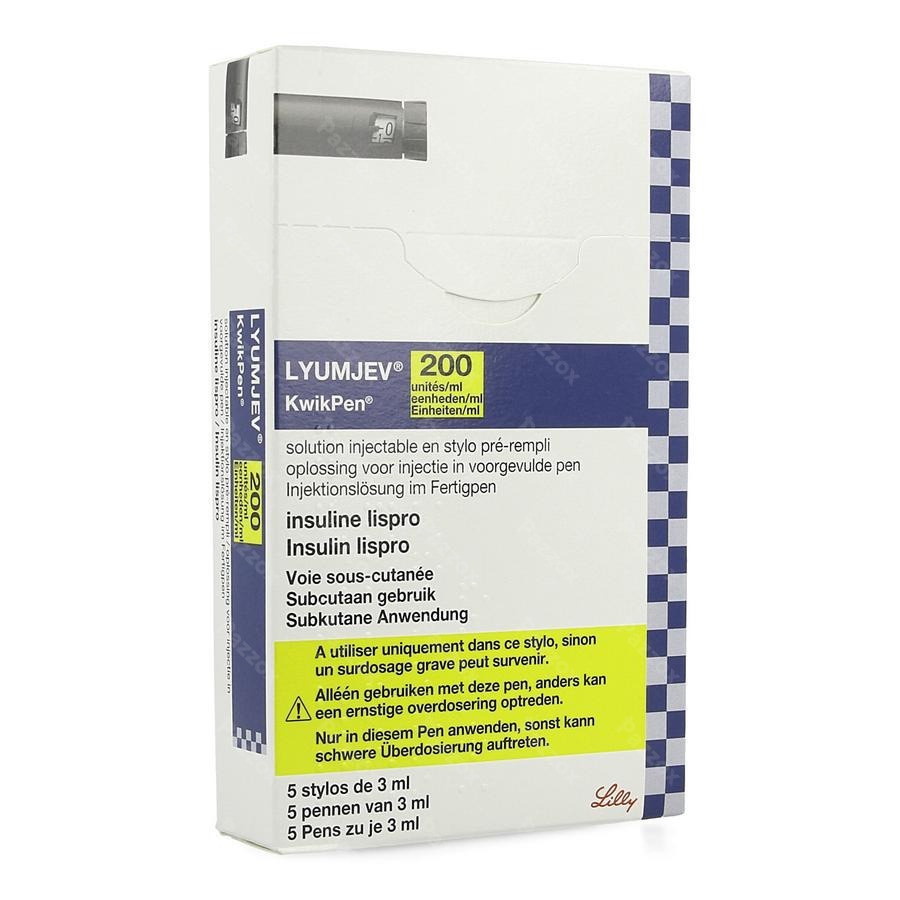
LYUMJEV 200 units/ml KWIKPEN PRE-FILLED PEN INJECTABLE SOLUTION

Ask a doctor about a prescription for LYUMJEV 200 units/ml KWIKPEN PRE-FILLED PEN INJECTABLE SOLUTION

How to use LYUMJEV 200 units/ml KWIKPEN PRE-FILLED PEN INJECTABLE SOLUTION
Introduction
Package Leaflet: Information for the User
Lyumjev 200 units/ml KwikPen Solution for Injection in Pre-filled Pen
insulin lispro
Each KwikPen Delivers 1 to 60 Units in Increments of 1 Unit.
This medicinal product is subject to additional monitoring, which will allow for quick identification of new safety information. You can help by reporting any side effects you may get. The last section of the package leaflet contains information on how to report side effects.
Read all of this leaflet carefully before you start using this medicine because it contains important information for you.
- Keep this leaflet, you may need to read it again.
- If you have any further questions, ask your doctor, pharmacist, or nurse.
- This medicine has been prescribed for you only. Do not pass it on to others. It may harm them, even if their symptoms are the same as yours.
- If you get any side effects, talk to your doctor, pharmacist, or nurse. This includes any possible side effects not listed in this leaflet. See section 4.
Contents of the Package Leaflet
- What is Lyumjev 200 units/ml KwikPen and what is it used for
- What you need to know before you start using Lyumjev 200 units/ml KwikPen
- How to use Lyumjev 200 units/ml KwikPen
- Possible side effects
- Storage of Lyumjev 200 units/ml KwikPen
- Package Contents and Further Information
1. What is Lyumjev 200 units/ml KwikPen and what is it used for
Lyumjev 200 units/ml KwikPen Solution for Injection in Pre-filled Pen contains the active substance insulin lispro. Lyumjev is used to treat diabetes in adults. It is an insulin that is administered at mealtimes and acts more quickly than other medicines that contain insulin lispro. Lyumjev has components that accelerate the absorption of insulin lispro by the body.
Diabetes is a disease in which the body does not produce enough insulin or does not use insulin effectively, resulting in effects such as high blood sugar levels. Lyumjev is an insulin used to treat diabetes by controlling blood sugar levels. Effective treatment of diabetes, with good blood sugar control, prevents long-term complications of diabetes.
Treatment with Lyumjev helps control blood sugar levels in the long term and prevents complications of diabetes. Lyumjev reaches its maximum effect between 1 and 3 hours after injection and the effect lasts up to 5 hours. You should use Lyumjev when you start eating, or up to 20 minutes after starting a meal.
Your doctor may recommend using Lyumjev in addition to a long-acting or intermediate-acting insulin. Do not change your insulin unless your doctor tells you to.
The Lyumjev 200 units/ml KwikPen is a pre-filled, disposable pen that contains 3 ml (600 units, 200 units/ml) of insulin lispro. A KwikPen contains multiple doses of insulin. The KwikPen marks 1 unit each time. The number of units is shown in the dosing window, always check it before your injection. You can inject from 1 to 60 units in a single injection. If your dose is more than 60 units, you will need to administer more than one injection.
2. What you need to know before you start using Lyumjev 200 units/ml KwikPen
DO NOT use Lyumjev 200 units/ml KwikPen
- if you think your blood sugar level is low (hypoglycemia). Later in this leaflet, it is indicated how to act in case of low blood sugar level (see section 3 “If you use more Lyumjev than you should”).
- if you are allergicto insulin lispro or any of the other components of this medicine (listed in section 6).
Warnings and Precautions
- Lyumjev 200 units/ml solution for injection in pre-filled pen (KwikPen) should be injected EXCLUSIVELY with this pre-filled pen. Do not transfer insulin lispro from your Lyumjev 200 units/ml KwikPen to a syringe. The marks on the insulin syringe will not indicate the correct dose. A severe overdose may occur, causing a low blood sugar level, which can be life-threatening. Do not transfer insulin from your Lyumjev 200 units/ml KwikPen to other insulin delivery devices such as insulin infusion pumps.
Consult your doctor, pharmacist, or nurse before using Lyumjev.
If you have vision problems, you will need the help of a trained person to administer the injections.
- Low blood sugar level(hypoglycemia).
A low blood sugar level can be serious and untreated hypoglycemia can even cause death.
Lyumjev starts to lower blood sugar levels faster than other insulins administered at mealtimes. If you experience hypoglycemia, you may notice it soon after a Lyumjev injection. If you often experience hypoglycemia or have difficulty recognizing the symptoms, please discuss this with your doctor or nurse. If your blood sugar levels are well controlled with your current insulin therapy or if you have had diabetes for a long time, you may not perceive the warning symptoms that alert you to the fact that your blood sugar level is dropping too low. Later in this leaflet, the warning symptoms are listed. For more information on symptoms, please consult “Common Problems of Diabetes”.
You should carefully plan when to eat, when to exercise, and to what extent you can do so. You should also closely monitor your blood sugar levels by performing frequent blood sugar tests.
Making changes in the type of insulin you use may cause your blood sugar level to rise or fall too much.
You may need to increase the frequency of blood sugar tests if there is a risk of low blood sugar levels. Your doctor may consider it necessary to make changes in the doses of other medicines you use to treat your diabetes.
- High blood sugar level(hyperglycemia).
Stopping insulin administration or not using enough insulin may cause a high blood sugar level (hyperglycemia) and diabetic ketoacidosis, which are serious disorders that can even cause death. For more information on symptoms, please consult “Common Problems of Diabetes”.
- If you combine your insulin treatment with a type of diabetes medicine called thiazolidinediones or glitazones, such as pioglitazone, inform your doctor as soon as possible if you have signs of heart failure such as unusual difficulty breathing, rapid weight gain, or localized swelling caused by fluid retention (edema).
- If you experience a severe allergic reaction to insulin or any of the components of Lyumjev, stop using this medicine and contact the emergency medical service immediately.
- Always check the name and type of insulin that appears on the packaging and label when you receive it at the pharmacy. Make sure you are carrying the Lyumjev that your doctor has prescribed for you.
- Keep the box or note the batch number that appears on the box. This way, if you experience a side effect, you can provide that number when reporting the side effect, see “Reporting Side Effects”.
- Always use a new needle for each injection to prevent infections and needle blockage. If the needle becomes blocked, replace it with a new needle.
- Changes in the skin at the injection site.
The injection site should be rotated to avoid changes in the skin, such as lumps under the skin. Insulin may not work very well if it is injected into a swollen area (see “How to use Lyumjev 200 units/ml KwikPen”). Contact your doctor if you are currently injecting into a swollen area, before starting to inject into a different area. Your doctor may indicate that you should check your blood sugar levels more closely and adjust the insulin or the dose of your other anti-diabetic medications.
Children and Adolescents
This medicine should not be used in children or adolescents, as there is no experience with the use of this medicine in children and adolescents under 18 years of age.
Other Medicines and Lyumjev
Tell your doctor, nurse, or pharmacist if you are taking, have recently taken, or might take any other medicines. Some medicines affect your blood sugar level, and you may need to change your insulin dose.
Your blood sugar level may decrease (hypoglycemia) if you take:
- other diabetes medicines (oral and injectable)
- sulfonamide antibiotics (to treat infections)
- acetylsalicylic acid (to relieve pain and reduce fever, and to prevent blood clots)
- certain antidepressants (monoamine oxidase inhibitors or selective serotonin reuptake inhibitors)
- certain angiotensin-converting enzyme inhibitors (ACE inhibitors) (such as captopril, enalapril) (to treat certain heart problems or high blood pressure)
- angiotensin II receptor blockers (to treat high blood pressure or heart problems)
- somatostatin analogs (such as octreotide, used to treat a rare disease characterized by excessive production of growth hormone)
Your blood sugar level may increase (hyperglycemia) if you take:
- danazol (to treat endometriosis)
- oral contraceptives (birth control pill)
- thyroid hormone replacement therapy (to treat thyroid problems)
- human growth hormone (to treat growth hormone deficiency)
- diuretics (to treat high blood pressure or if your body retains too much fluid)
- sympathomimetics (to treat severe allergic reactions or used in some cold medicines)
- corticosteroids (to treat asthma or autoimmune diseases)
Betablockers (used for high blood pressure, arrhythmias, or angina pectoris) may make it more difficult to recognize the warning signs of low blood sugar levels.
Using Lyumjev with Alcohol
If you drink alcohol, your blood sugar levels may increase or decrease. Therefore, you may need to change the amount of insulin you need. You should therefore check your blood sugar level more frequently than usual.
Pregnancy and Breastfeeding
If you are pregnant or breastfeeding, think you may be pregnant, or are planning to have a baby, ask your doctor, nurse, or pharmacist for advice before using this medicine. The amount of insulin you need usually decreases during the first three months of pregnancy and increases during the next six months. Once you have had your baby, your insulin requirements will probably return to what they were before pregnancy.
During breastfeeding, there are no restrictions on treatment with Lyumjev. If you are breastfeeding, you may need to adjust your insulin dose or diet.
Driving and Using Machines
Your ability to concentrate and react may be reduced if you experience hypoglycemia. Please consider this possible problem, taking into account all situations that may be a risk for you or others (e.g., driving a car or using machines). You should consult your doctor about the suitability of driving if you:
- have frequent episodes of hypoglycemia
- have difficulty perceiving the warning signs of hypoglycemia or do not perceive them
Lyumjev 200 units/ml KwikPen
This medicine contains less than 1 mmol of sodium (23 mg) per dose; i.e., it is essentially “sodium-free”.
3. How to use Lyumjev 200 units/ml KwikPen
Follow the administration instructions for the medication contained in this prospectus or as indicated by your doctor, pharmacist, or nurse. If in doubt, ask your doctor, pharmacist, or nurse.
They will have indicated exactly how much Lyumjev to use, when to use it, and how often. They will also indicate how often you should visit your doctor.
To prevent the possible transmission of diseases, each pen should be used only by you, even if you change the needle.
Do not use Lyumjev 200 units/ml KwikPen injectable solution in an insulin infusion pump.
You should always carry a spare insulin and another injection device to use in case of need.
If you are blind or have reduced vision, you will need the help of a person to administer the injections.
Your doctor may indicate that you use Lyumjev as well as a long-acting or intermediate-acting insulin. Inject them separately. Lyumjev should not be mixed with any other insulin.
When to inject Lyumjev
Lyumjev is an insulin that is administered at mealtime. You should use Lyumjev when you start eating, or one or two minutes before eating; you also have the option of injecting up to 20 minutes after starting the meal.
How much insulin to use
Your doctor will determine the dose based on your blood sugar level and body weight and will explain
- How much Lyumjev you need at each meal.
- How and when to check your blood sugar level.
- How to change your insulin dose based on your blood sugar levels.
- What to do if you make changes to your diet, exercise, or if you are sick or using other medications.
- If you change the type of insulin you use, you may need to use a larger or smaller amount than before. This may only be the case for the first injection or may require a gradual change that lasts several weeks or months.
Do not use Lyumjev
- If it does not have the appearance of water. Lyumjev should be transparent, colorless, and free of solid particles. Check it every time you inject.
- If Lyumjev has not been stored correctly (see section 5 "Storage of Lyumjev 200 units/ml KwikPen").
- If the pen is damaged in any way, do not use it.
How to prepare the Lyumjev 200 units/ml KwikPen (please refer to the instructions for use)
- First, wash your hands.
- Read the instructions on how to use your preloaded insulin pen. Follow the instructions carefully. The following are some reminders.
- Use a new needle. (Needles are not included).
- Purge your Lyumjev 200 units/ml KwikPen before each use. This verifies that the insulin comes out and that air bubbles are removed from your Lyumjev 200 units/ml KwikPen. There may still be some small air bubbles in your pen. Small air bubbles are normal and will not affect your dose.
- The number of units is shown in the dosing window, always check it before injecting.
How to inject Lyumjev
- Before injecting, clean your skin.
- Inject under the skin (subcutaneous injection), as your doctor or nurse has taught you.
- After the injection, leave the needle in the skin for 5 seconds to ensure that you have injected the full dose. Make sure you have injected at least 1 cm away from where you last injected and that you "alternate" the injection sites (upper arm, thigh, buttocks, or abdomen).
- If you do not have enough insulin in the pen to complete your dose, note how much you still need to use. Purge a new pen and inject the remaining dose.
- If you need to inject another insulin at the same time as Lyumjev, use a different injection site.
- Do not inject directly into a vein.
After the injection
- As soon as you have finished injecting, unscrew the needle from the Lyumjev 200 units/ml KwikPen using the outer needle protector. This will maintain the sterility of the insulin and prevent losses. It will also prevent air from entering the pen and the needle from becoming clogged. Do not share needles. Do not share your pen. Put the cap back on the pen.
- If you are not sure how much you have injected, check your blood sugar levels before deciding if you need another injection.
Subsequent injections
- Each time you use a Lyumjev 200 units/ml KwikPen, you should use a new needle. Before each injection, remove air bubbles. You can see how much insulin is left by holding the Lyumjev 200 units/ml KwikPen with the needle pointing upwards.
- Once the Lyumjev 200 units/ml KwikPen is empty, do not use it again.
If you use more Lyumjev than you should
If you inject too much Lyumjev, or are not sure how much you have injected, you may have low blood sugar. Check your blood sugar.
If your blood sugar is low (hypoglycemia) and you can treat yourself, take glucose tablets, sugar, or drink a sugary drink. Then eat fruit, cookies, or a snack, as your doctor or nurse has indicated, and take a break. This usually helps to overcome a low blood sugar or a mild insulin overdose. Check your blood sugar levels again after 15-20 minutes until your blood sugar stabilizes.
If you are unable to treat yourself (severe hypoglycemia) because you feel too dizzy, weak, confused, have difficulty speaking, loss of consciousness, or have a seizure, you may need treatment with glucagon. This can be administered by someone who knows how to use it. After being treated with glucagon, take glucose or sugar. If you do not respond to glucagon, you should go to the hospital or call emergency services. Ask your doctor to inform you about glucagon.
Inform the people around you that you have diabetes. Tell them what the consequences of low blood sugar might be, including the risk of losing consciousness.
Tell them that if you become unconscious, they should do the following: lay you on your side to prevent choking, seek immediate medical attention, and do not give you anything to eat or drink, as you may choke.
If you forgot to use Lyumjev
If you forget to use your insulin or use less than you should, or are not sure how much you have injected, your blood sugar level may become very high (hyperglycemia). Check your blood sugar level to decide if an insulin dose is needed. Resume your usual dosing schedule at the next meal.
If you interrupt treatment with Lyumjev
Do not interrupt treatment or change insulin unless your doctor indicates it. If you use less Lyumjev than you should, you may have high blood sugar.
If high blood sugar (hyperglycemia) is not treated properly, it can be very serious and cause headache, nausea, vomiting, abdominal pain, dehydration, loss of consciousness, coma, and even death (see section 4).
Three simple measuresto reduce the risk of hypoglycemia or hyperglycemia are:
- Always carry a spare pen in case you lose your Lyumjev 200 units/ml KwikPen or it breaks.
- Always carry some identification that indicates you have diabetes.
- Always carry something sugary with you.
If you have any other questions about the use of this medication, ask your doctor, pharmacist, or nurse.
4. Possible side effects
Like all medications, this medication can cause side effects, although not everyone will experience them.
Low blood sugar (hypoglycemia)is very common with insulin treatment (it can affect more than 1 in 10 people). It can be very serious. If your blood sugar level drops too low, you may lose consciousness. Severe hypoglycemia can cause brain damage and put your life at risk. If you have symptoms of low blood sugar, act immediatelyto increase your blood sugar level. See section 3 "If you use more Lyumjev than you should".
Allergic reactionsare common (they can affect up to 1 in 10 people). They can be serious and include the following symptoms:
|
|
|
|
|
|
If you have a severe allergic reaction(including anaphylactic shock) to insulin or any of the components of Lyumjev, stop using this medication and contact emergency medical services immediately.
Other side effects include
Common
Reactions at the injection site. In some people, redness, pain, inflammation, or itching may appear at the insulin injection site. These reactions usually disappear within a few minutes to a few weeks without needing to interrupt Lyumjev. If you have reactions at the injection site, talk to your doctor.
Uncommon(can affect up to 1 in 100 people)
Changes in the skin at the injection site: If you inject insulin too frequently in the same spot, the fatty tissue can shrink (lipoatrophy) or become thicker (lipohypertrophy). Lumps under the skin can also occur due to the accumulation of a protein called amyloid (cutaneous amyloidosis). Insulin may not work very well if injected into a thickened area. Change the injection site to help avoid these skin changes.
Other possible side effects
Swelling in the arms or legs due to fluid retention (edema), especially at the start of insulin treatment or during a change in your diabetes medications.
Reporting side effects
If you experience any side effects, consult your doctor or pharmacist, even if it is a possible side effect not listed in this prospectus. You can also report them directly through the national reporting system included in Appendix V. By reporting side effects, you can help provide more information on the safety of this medication.
Common diabetes problems
Low blood sugar
Low blood sugar (hypoglycemia) means you do not have enough sugar in your blood.
This can happen if:
- you use too much Lyumjev or other insulin;
- you skip or delay meals, or change your diet;
- you exercise or work hard immediately before or after a meal;
- you have an infection or illness (especially diarrhea or vomiting);
- there is a change in your insulin needs, for example, if you lose weight; or you have kidney or liver problems that worsen.
See section "If you use more Lyumjev than you should".
The first symptoms of low blood sugar usually appear quickly and include:
- fatigue
- rapid heartbeat
- nervousness or tremors
- nausea
- headache
- cold sweat
If you are not sure how to recognize the warning signs, avoid situations such as driving a car, in which you or others could be in danger if hypoglycemia occurs.
High blood sugar (hyperglycemia)and diabetic ketoacidosis
Hyperglycemia (too much sugar in the blood) means that the glucose levels in your body are too high. Hyperglycemia can be caused by:
- not using your insulin;
- using less insulin than your body needs;
- an imbalance between the amount of carbohydrates you eat and the insulin you use; or
- fever, infection, or emotional stress.
The first symptoms of hyperglycemia are:
- feeling very thirsty
- headache
- drowsiness
- increased need to urinate
Hyperglycemia can lead to diabetic ketoacidosis. The first symptoms appear slowly, over many hours or several days. These symptoms include:
- nausea and/or vomiting
- abdominal pain
- rapid pulse
- rapid breathing
- moderate or large amounts of ketones in the urine. Ketones are produced when your body uses fat instead of glucose for energy.
If you have any of these symptoms and high blood sugar, seek medical attention immediately.
See section "If you forgot to use Lyumjev".
Illness
If you are sick, especially if you have nausea or vomiting, the amount of insulin you need may vary. Even if you are not eating as usual, you still need to receive insulin.Perform urine or blood tests, follow the instructions you have been given for these cases, and inform your doctor.
5. Storage of Lyumjev 200 units/ml KwikPen
Keep this medication out of sight and reach of children.
Do not use this medication after the expiration date shown on the label and carton. The expiration date is the last day of the month indicated.
Store in the outer packaging to protect from light.
Before first use
Store in the refrigerator (between 2°C - 8°C).
Do not freeze.
After first use
Do not store above 30°C.
Do not freeze.
Do not refrigerate.
The Lyumjev 200 units/ml KwikPen should not be stored with the needle attached. Keep the cap on the pen to protect it from light.
Discard after 28 days even if some solution is left.
Medicines should not be disposed of via wastewater or household waste. Ask your pharmacist how to dispose of the packaging and any unused medication. This will help protect the environment.
6. Container Contents and Additional Information
Composition of Lyumjev 200 units/ml KwikPen injectable solution
- The active ingredient is insulin lispro. Each ml of solution contains 200 units of insulin lispro. Each Lyumjev 200 units/ml KwikPen pen contains 600 units of insulin lispro in 3 ml of solution.
- The other components are metacresol, glycerol, magnesium chloride hexahydrate, sodium citrate dihydrate, treprostinil sodium, zinc oxide, and water for injectable preparations. Sodium hydroxide or hydrochloric acid may have been used to adjust the pH (see the end of section 2 "Lyumjev 200 units/ml KwikPen contains sodium").
Appearance of the Product and Container Contents
Lyumjev 200 units/ml KwikPen injectable solution is a clear, colorless, aqueous solution in a pre-filled pen. Each pre-filled pen contains 600 units (3 milliliters). It is available in packs of 2 or 5 or in a multipack of 10 pre-filled pens (2 packs of 5 pre-filled pens). Not all presentations may be marketed.
The Lyumjev 200 units/ml KwikPen pen is gray-brown in color. The dosing button is gray-brown with raised markings on the side. The label is white with a blue bar and a checkered design. On the carton and label, the insulin concentration appears highlighted in a yellow background box.
The yellow warning label on the cartridge holder reminds you to "Use only with this pen, otherwise a serious overdose may occur".
Each Lyumjev 200 units/ml KwikPen administers from 1 to 60 units in increments of 1 unit.
Marketing Authorization Holder
Eli Lilly Nederland B.V., Papendorpseweg 83, 3528 BJ Utrecht, Netherlands.
Manufacturer
Lilly France S.A.S., Rue du Colonel Lilly, 67640 Fegersheim, France.
You can request more information about this medicinal product by contacting the local representative of the marketing authorization holder:
Belgium/België/Belgien Eli Lilly Benelux S.A./N.V. Tel: + 32-(0)2 548 84 84 | Lithuania Eli Lilly Lietuva Tel: +370 (5) 2649600 |
| Luxembourg/Luxemburg Eli Lilly Benelux S.A./N.V. Tel: + 32-(0)2 548 84 84 |
Czech Republic ELI LILLY CR, s.r.o. Tel: + 420 234 664 111 | Hungary Lilly Hungária Kft. Tel: + 36 1 328 5100 |
Denmark Eli Lilly Danmark A/S Tel: +45 45 26 6000 | Malta Charles de Giorgio Ltd. Tel: + 356 25600 500 |
Germany Lilly Deutschland GmbH Tel: + 49-(0) 6172 273 2222 | Netherlands Eli Lilly Nederland B.V. Tel: + 31-(0) 30 60 25 800 |
Estonia Eli Lilly Nederland B.V. Tel: +372 6817 280 | Norway Eli Lilly Norge A.S. Tel: + 47 22 88 18 00 |
Greece ΦΑΡΜΑΣΕΡΒ-ΛΙΛΛΥ Α.Ε.Β.Ε. Tel: +30 210 629 4600 | Austria Eli Lilly Ges. m.b.H. Tel: + 43-(0) 1 711 780 |
Spain Dista S.A. Tel: + 34-91 663 50 00 | Poland Eli Lilly Polska Sp. z o.o. Tel: +48 22 440 33 00 |
France Lilly France Tel: +33-(0) 1 55 49 34 34 | Portugal Lilly Portugal - Produtos Farmacêuticos, Lda Tel: + 351-21-4126600 |
Croatia Eli Lilly Hrvatska d.o.o. Tel: +385 1 2350 999 | Romania Eli Lilly România S.R.L. Tel: + 40 21 4023000 |
Ireland Eli Lilly and Company (Ireland) Limited Tel: + 353-(0) 1 661 4377 | Slovenia Eli Lilly farmacevtska družba, d.o.o. Tel: +386 (0) 1 580 00 10 |
Iceland Icepharma hf. Tel: + 354 540 8000 | Slovakia Eli Lilly Slovakia s.r.o. Tel: + 421 220 663 111 |
Italy Eli Lilly Italia S.p.A. Tel: + 39- 055 42571 | Finland Oy Eli Lilly Finland Ab Tel: + 358-(0) 9 85 45 250 |
Cyprus Phadisco Ltd Tel: +357 22 715000 | Sweden Eli Lilly Sweden AB Tel: + 46-(0) 8 7378800 |
Latvia Eli Lilly (Suisse) S.A Parstavnieciba Latvija Tel: +371 67364000 | United Kingdom (Northern Ireland) Eli Lilly and Company (Ireland) Limited Tel: + 353-(0) 1 661 4377 |
Date of Last Revision of this Leaflet:
Detailed information on this medicinal product is available on the European Medicines Agency website: http://www.ema.europa.eu/.
Instructions for Use
Lyumjev 200 units/ml KwikPen injectable solution in a pre-filled pen
insulin lispro

PLEASE READ THESE INSTRUCTIONS BEFORE USING

Read the instructions for use before starting to use Lyumjev and each time you start another Lyumjev KwikPen. There may be new information. This information does not replace a direct conversation with your healthcare professional about your disease or treatment.
Do not share your Lyumjev KwikPen with other people, even if the needle has been changed. Do not reuse or share needles with other people. You may give them a serious infection, or they may give you a serious infection.
Lyumjev 200 units/ml KwikPen ("pen") is a pre-filled pen that contains 3 ml (600 units, 200 units/ml) of insulin lispro injectable solution.
- Your healthcare professional will tell you how many units you should use for your dose and how to inject the prescribed dose of insulin.
- You can give more than 1 dose with your pen.
- Each turn of the dosing button marks 1 unit of insulin. You can give from 1 to 60 units in a single injection.
- If your dose is more than 60 units, you will need to give more than 1 injection. Always check the number shown in the dosing window to make sure you have dialed the correct dose.
- With each injection, the plunger moves only a little, so you may not notice the movement. The plunger will reach the end of the cartridge only when you have used the 600 units of the pen.
This pen is designed to allow you to give more doses than other pens you may have used. Dial your usual dose as directed by your healthcare professional.
Lyumjev KwikPen is available in two presentations, 100 units/ml and 200 units/ml. Inject Lyumjev 200 units/ml only with your pen. Do not transfer insulin from your pen to another insulin delivery device. Syringes and insulin pumps will not dose 200 units/ml of insulin correctly. A serious overdose may occur, producing very low blood sugar levels, which can be life-threatening.
Blind or visually impaired people should not use the pen without the help of a trained person in the use of the pen.
Parts of Lyumjev KwikPen

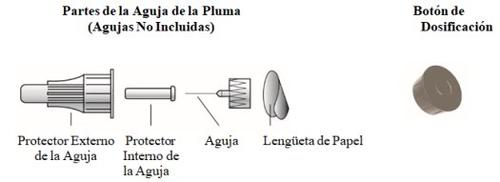
How to Recognize Your Lyumjev KwikPen
- Pen color: Gray-brown
- Dosing Button: Gray-brown, with raised markings on the side
- Label: White with a blue bar and a checkered design. Yellow warning on the cartridge holder.
Materials Needed to Inject
- Lyumjev KwikPen
- KwikPen compatible needle (BD needles [Becton, Dickinson and Company] are recommended)
- Cotton or gauze
Preparing Your Pen
- Wash your hands with soap and water.
- Check the pen to make sure you are using the correct type of insulin. This is especially important if you use more than 1 type of insulin.
- Do notuse your pen after the expiration date printed on the label or more than 28 days after you first start using your pen.
- Always use a new needlefor each injection to help prevent infections and clogged needles.
Step 1:
|
|
Step 2:
Do notuse it if its appearance is cloudy, colored, or if it has particles or clumps. | |
Step 3:
|
|
Step 4:
|
|
Step 5:
|
|
Priming Your Pen
Prime before each injection.
- Priming your pen means removing any air that may be in the needle and cartridge during normal use and ensures that the pen works correctly.
- If you do notprime before each injection, you may receive too much or too little insulin.
Step 6:
|
|
Step 7:
|
|
Step 8:
Insulin should appear at the tip of the needle.
Small air bubbles are normal and will not affect your dose. |
|
Selecting Your Dose
This pen has been designed to deliver the dose shown in the dosing window. Dial your usual dose as directed by your healthcare professional.
- You can give from 1 to 60 units in a single injection.
- If your dose is more than 60 units, you will need more than 1 injection.
- If you need help deciding how to divide your dose, ask your healthcare professional.
- Use a new needle for each injection and repeat the priming steps.
Step 9:
|
|
- The pen will not let you dial more units than it contains.
- If you need to inject more units than the pen contains, you can:
- inject the amount left in your pen and then use a new pen to inject the rest of the dose,
or
- use a new pen and inject the full dose.
- It is normal to see a small amount of insulin left in the pen that cannot be injected. Do not transfer it to a syringe. A serious overdose may occur.
Giving the Injection
- Inject your insulin as shown by your healthcare professional.
- Change (rotate) the injection site each time you inject.
- Do nottry to change your dose while injecting.
Step 10:
Lyumjev is injected under the skin (subcutaneously) in the abdominal area, buttocks, thighs, or upper arms.
|
|
Step 11:
Do nottry to inject your insulin by turning the dosing button. Turning the dosing button will notdeliver the insulin. |
|
Step 12:
With each injection, the plunger moves only a little, so you may not notice the movement. If you see blood in your skin after removing the needle, press the injection site lightly with a piece of gauze or cotton ball. Do notrub the area. |
|
After Your Injection
Step 13:
|
|
Step 14: >
|
|
Step 15:
|
|
Disposal of Pens and Needles
- Deposit used needles in a puncture-resistant container or a hard plastic container with a secure closure. Donot throw needles directly into the household trash.
- Donot recycle the filled puncture-resistant container.
- Consult your healthcare professional about the available options for properly disposing of the pen and the puncture-resistant container.
- The instructions for handling needles are not intended to replace local, institutional, or healthcare professional guidelines.
Troubleshooting
- If you cannot remove the pen cap, gently turn the cap from side to side, and then pull the cap outward.
- If it is difficult to press the dose button:
- it will be easier to inject if you press the dose button more slowly.
- your needle may be clogged. Put on a new needle and purge the pen.
- dust, food residue, or liquid may have entered the pen. Discard the pen and get a new one.
If you have any questions or problems with Lyumjev 200 units/ml KwikPen, consult your healthcare professional or contact Lilly in Spain.
Date of the last revision of this document:
- Country of registration
- Active substance
- Prescription requiredYes
- Manufacturer
- This information is for reference only and does not constitute medical advice. Always consult a licensed doctor before taking any medication. Oladoctor is not responsible for medical decisions based on this content.
- Alternatives to LYUMJEV 200 units/ml KWIKPEN PRE-FILLED PEN INJECTABLE SOLUTIONDosage form: INJECTABLE, 100 U/mlActive substance: insulin lisproManufacturer: Eli Lilly Nederland B.V.Prescription requiredDosage form: INJECTABLE, 100 U/mlActive substance: insulin lisproManufacturer: Eli Lilly Nederland B.V.Prescription requiredDosage form: INJECTABLE, 100 U/mlActive substance: insulin lisproManufacturer: Eli Lilly Nederland B.V.Prescription required
Alternatives to LYUMJEV 200 units/ml KWIKPEN PRE-FILLED PEN INJECTABLE SOLUTION in other countries
The best alternatives with the same active ingredient and therapeutic effect.
Alternative to LYUMJEV 200 units/ml KWIKPEN PRE-FILLED PEN INJECTABLE SOLUTION in Ukraine
Online doctors for LYUMJEV 200 units/ml KWIKPEN PRE-FILLED PEN INJECTABLE SOLUTION
Discuss dosage, side effects, interactions, contraindications, and prescription renewal for LYUMJEV 200 units/ml KWIKPEN PRE-FILLED PEN INJECTABLE SOLUTION – subject to medical assessment and local rules.







